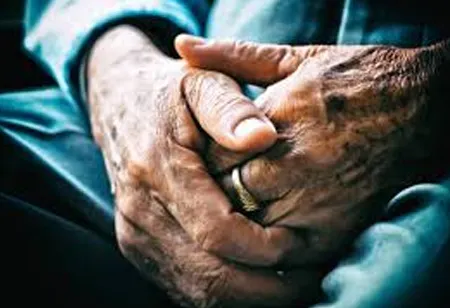Thank you for Subscribing to Healthcare Business Review Weekly Brief

Challenges for Elderly in the Post-Pandemic Healthcare Environment
Healthcare Business Review
Since the onset of the pandemic more than one year ago, the healthcare system has been faced with challenges in meeting the ongoing health care needs of the elderly population. Many clinics were faced with the task of providing ongoing health care while limiting face-to-face encounters with patients in their clinics and other traditional healthcare settings. Therefore, technology has been used at a much greater level presenting concerns regarding access for elderly patients.
There are many technological features available for elderly patients to promote self-care and enhance health promotion. These include medication adherence devices, home telemonitoring equipment, digital scales, digital blood pressure monitoring equipment, and telephonic heart monitoring systems, just to name a few. Many of these devices also require internet capability, bluetooth technology, or telephonic services that may be limited in rural areas where elderly patients reside.
Many elderly patients are unfamiliar with technology and are intimidated by basic technological health care equipment. They frequently do not understand how it operates, are fearful that sensitive patient information could be compromised, and lack the ability to operate the equipment properly. Elderly patients who have poor vision and hearing may become frustrated and give up when it comes to using basic equipment, such as home telemonitoring services, electronic blood pressure monitoring equipment, or other devices that provide basic health information.
There are many advantages to the use of technology in healthcare for all patients. Elderly patients may benefit from technological features in healthcare by avoiding crowds of people in the waiting rooms of doctors’ offices, providing emergency contact through a monitoring system when human assistance is not readily available, or providing reminders for taking medications thus improving medication adherence and reducing unnecessary hospitalizations. In many cases, elderly patients may have family members who live close by or who may be available by phone to provide assistance; however, these individuals may work and are not able to provide assistance throughout the normal workday, making it difficult for the community-dwelling elder to get the assistance they need in a timely manner. It is imperative that healthcare agencies provide adequate education and resources to properly train elderly patients to use this equipment. This may involve hands-on training in the home, meetings with families or caregivers to provide backup assistance when needed, and monitoring systems to provide troubleshooting help.
Home care agencies are in a perfect position to provide education and training to community-dwelling elderly patients helping them to use healthcare-related technology safely and efficiently. Almost all technology requires an internet connection to transmit and receive data from both the provider and the patient. Many elders reside in communities with limited or no reliable internet capability.
Moreover, elders on fixed incomes may not be able to afford internet services. General Packet Radio Service (GPRS) units can be placed in the home of the patient on an as-needed basis and can be used to transmit and receive health information.Home telemonitoring services may use GPRS to receive patient information, send the patient medication reminders, and provide patient education through the remote monitoring system. This unit is plugged into a standard electrical outlet and utilizes existing cellular signals to transmit and receive data.
Conducting office visits with providers may require a smartphone so the provider can see the patient and vice versa. Companies offer affordable smartphone options designed for seniors that include talk, text, and data at prices well below the cost of typical cell phone services. Availability of services would depend on the geographical area where the elder resides. Training and education could be provided to the individual in real-time by allowing them to connect with the provider while the nurse is in the home. When video services are not available to conduct a face-to-face visit, the provider can speak with the individual by phone while the nurse is in the home to provide helpful medical information.
Medication adherence is an important aspect of keeping the elderly individual at their maximum level of wellness. Electronic medication reminders are available with both visual and audio reminders when a medication is due. These may be complicated to set up and may require assistance from the health care provider or family member to make sure the schedule is correct. Hearing and vision deficits, as well as limited dexterity, may interfere with the effective and efficient use of these devices. Traditional medication planners that are divided by days of the week and times of the day may be more effective in promoting medication compliance.
Another traditional service provided by local pharmacies is the creation of unit-dose packs. Many pharmacies provide this service at little or no additional charge to the patient. During the pandemic, many challenges have been addressed and successfully managed in the healthcare system. However, opportunities for improvement still exist in meeting the healthcare needs of the community-dwelling elderly individual. Providers and clinicians across the healthcare continuum can work together to effectively meet these challenges. Improving access to the healthcare system through technology and improving medication adherence are two significant measures for the elderly individual to actively participate in their health care as well as improving quality of life. These goals can be met through education, training, and support, thus providing a health care experience that is both enriching and empowering.









